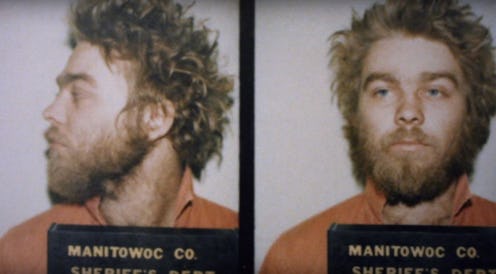News
Steven Avery Was Convicted Of A Number Of Crimes

Netflix viewers have found their newest binge-worthy series, and it's of a slightly different genre than Friends. Think Serial, but not just for your ears. Making a Murderer, a 10-part documentary series distributed by the streaming media company investigates criminal charges made against Wisconsin man Steven Avery and the string of events that led to his prosecution. The circumstances surrounding Avery's convictions and trials are a bit complicated — Netflix has clearly found the recipe for creating that edge-of-your-seat goodness. So what was Steven Avery convicted of, exactly?
There are actually two separate convictions the series looks into, the first of which brings viewers back three decades. In 1985, Avery was charged with the sexual assault of Penny Beerntsen, a woman from Manitowoc, Wisconsin, and sentenced to 32 years in prison for the sexual assault and other alleged crimes. After a number of unsuccessful appeals and a petition for DNA testing, attorneys from the Innocence Project, which seeks to exonerate innocent prisoners, obtained a court order that allowed a state crime laboratory to perform DNA testing on hairs found on Beerntsen at the crime scene. The evidence linked the hairs to Gregory Allen, a convicted felon already serving time for sexual assault, and in 2003, Avery was exonerated.
But it's what happens after Avery's 2003 release from prison that is Making a Murderer's main focus. In the midst of Avery's lawsuit against the county for the wrongful conviction in the '80s, law enforcement arrested Avery for a new crime: the murder of a woman named Teresa Halbach. Halbach, who reportedly scheduled a meeting with Avery to photograph a car at his family's auto salvage yard on Halloween in 2005, disappeared that day. Avery was charged with the photographer's murder less than two weeks later. Though Avery claimed that police were trying to frame him, he was found guilty of Halbach's murder in 2007 and was sentenced to life in prison without the possibility of early release.
The series provides viewers with plenty of reasons to believe Avery was indeed Halbach's murderer. Avery could have very well been the last person to see Halbach. Her car was found at the salvage yard, and her car key was discovered inside Avery's home. Authorities also found Avery's blood inside Halbach's car, and her bones were discovered on his property. Avery's nephew, who was also found guilty of intentional homicide for Halbach's death, confessed to helping Avery commit the murder.
But all of these circumstances are underlined with the possibility of foul play. The series filmmakers don't shy away from suggesting that there is validity to Avery's protestation of a plot by law enforcement to frame him. Viewers then have the opportunity to make up their own minds on whether Avery was wrongfully accused not just once, but a second time.
Image: Netflix